Related Research Articles

Jacksonville is a city located on the Atlantic coast of northeastern Florida, the most populous city proper in the state and the largest city by area in the contiguous United States as of 2020. It is the seat of Duval County, with which the city government consolidated in 1968. Consolidation greatly increased its population relative to its extended size which placed most of its metropolitan population within the city limits. As of July 2022, Jacksonville's population was 971,319, making it the most populous city in the Southeastern United States and the largest in the South outside the state of Texas. With a population of 1,733,937, the Jacksonville metropolitan area ranks as Florida's fourth-largest metropolitan region.
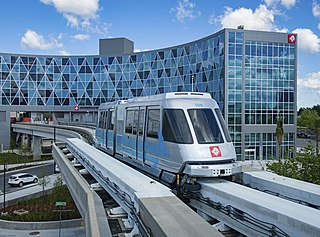
The Jacksonville Skyway is an automated people mover in Jacksonville, Florida. It opened in 1989 and is operated by the Jacksonville Transportation Authority (JTA). The skyway has three stations in Downtown Jacksonville and was extended in 1996 following a conversion from its original technology to Bombardier Transportation equipment. It was expanded again in 1998 and 2000. The currently fare-free system comprises two routes across 2.5 miles (4.0 km) of track, serving eight stations, and crosses the St. Johns River on the Acosta Bridge. In 2022, the system had a ridership of 276,600, or about 1,000 per day as of the first quarter of 2023.

EverBank Stadium is an American football stadium located in Jacksonville, Florida, that primarily serves as the home facility of the Jacksonville Jaguars of the National Football League (NFL) and the headquarters of the professional wrestling promotion All Elite Wrestling (AEW).

121 Financial Ballpark is a baseball park in Jacksonville, Florida. It is the home stadium of the Jacksonville Jumbo Shrimp Minor League Baseball team, who play in the International League. The facility opened in 2003.
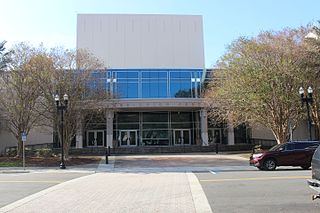
The Jacksonville Center for the Performing Arts (JCPA) is a performing arts center located in Jacksonville, Florida. Situated along the Riverbank, the venue is known as the First Coast’s "premiere riverfront entertainment facility". Originally opening in 1962, the facility was renovated beginning in 1995 until 1997; with a grand re-opening on February 8, 1997. The center consists of three venues: a theatre; concert hall and recital hall. It is home to the Jacksonville Symphony, Jacksonville Symphony Youth Orchestra, and the FSCJ Artist Series.
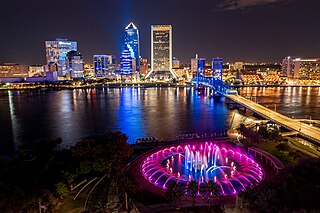
Downtown Jacksonville is the historic core and central business district (CBD) of Jacksonville, Florida. It comprises the earliest area of the city to be developed and is located in its geographic center along the narrowing point of the St. Johns River.
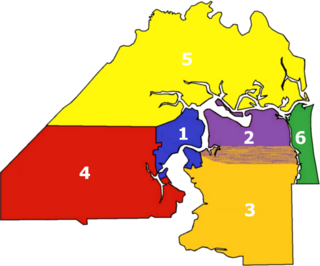
There are more than 500 neighborhoods within the area of Jacksonville, Florida, the largest city in the contiguous United States by area. These include Downtown Jacksonville and surrounding neighborhoods. Additionally, greater Jacksonville is traditionally divided into several major sections with amorphous boundaries: Northside, Westside, Southside, and Arlington, as well as the Jacksonville Beaches.
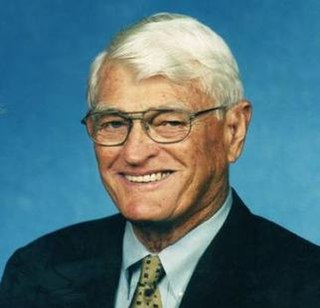
T. Edward "Ed" Austin Jr. was an American politician and attorney. He served as mayor of Jacksonville, Florida from 1991 to 1995. He also served as the first Public Defender for Florida's Fourth Judicial Circuit from 1963 to 1968, and served as State Attorney for the Fourth Judicial Circuit from 1969 to 1972 and again from 1974 to 1991. Austin was a Democrat for most of his career, but switched parties to become a Republican during his term as mayor, becoming the first Republican to serve in that position since the Reconstruction era.

The St. James Building is a historic building in Downtown Jacksonville, Florida, currently housing Jacksonville City Hall. It was designed by architect Henry John Klutho and opened in 1912. One of many structures in downtown Jacksonville designed by Klutho after the Great Fire of 1901, it is considered his Prairie School masterpiece.
Lewis Alexander Hester, III was a public administrator in Jacksonville, Florida. He "was the consummate no-nonsense administrator, the very best in his field," according to M. C. Harden III, past chairman of the Jacksonville Chamber of Commerce, influential in designing the city government of Jacksonville and managing it through the terms of three of Jacksonville's mayors. He served as the county Manager of Broward and Orange County and as City Manager of Duval County. He was largely responsible for the Blueprint for Consolidation which was a guide for cities all over the United States.

LaVilla is a historic African American neighborhood of Jacksonville, Florida and a was formerly an independent city. It developed after the American Civil War and was eventually annexed to the city of Jacksonville in 1887 and is now considered part of downtown.
The Jacksonville Landing was a festival marketplace in Downtown Jacksonville, Florida, at the intersection of Independent Drive and Laura Street, along the Jacksonville Riverwalk. It was built by the Rouse Company for $37.5 million, opened in 1987, and officially closed after the 4th of July festivities in 2019. Demolition began about October 8, 2019. The 126,000 square feet (11,706 m2) center was comparable to New York City's South Street Seaport, Boston's Faneuil Hall, and Miami's Bayside Marketplace, all developed by Rouse.

The Jacksonville Riverwalks are a network of multi-use trails and open space developments along both the north and south banks of the St. Johns River in Jacksonville, Florida. The roughly 2-mile (3.2 km) Downtown Northbank portion travels alongside the Hyatt Regency Jacksonville, Jacksonville Landing, Times-Union Center for the Performing Arts, CSX Transportation Building, and extends into the Brooklyn district. The 1.25-mile (2.01 km) Southbank portion of the trail connects local landmarks such as Friendship Fountain, Museum of Science and History and Riverplace Tower.

Friendship Fountain is a large fountain in Jacksonville, Florida. It is in St. Johns River Park at the west end of Downtown Jacksonville's Southbank Riverwalk attraction. The world's largest and tallest fountain when it opened, it has been one of Jacksonville's most recognizable and popular attractions.

James Weldon Johnson Park is a 1.54-acre (6,200 m2) public park in Downtown Jacksonville, Florida. Originally a village green, it was the first and is the oldest park in the city.

The Jacksonville transportation network includes ground, air, and sea options for passenger and freight transit. The Jacksonville Port Authority (Jaxport) operates the Port of Jacksonville, which includes container shipping facilities at Blount Island Marine Terminal, the Talleyrand Marine Terminal and the Dames Point Marine Terminal. Jacksonville Aviation Authority managers Jacksonville International Airport in Northside, as well as several smaller airports. The Jacksonville Transportation Authority (JTA) operates bus, people mover, and park-n-ride services throughout the city and region. A major bus terminal at the intermodal Rosa Parks Transit Station serves as JTA's main transit hub. Various intercity bus companies terminate near Central Station. Amtrak operates passenger rail service to and from major cities throughout North America. The city is bisected by major highways, I-95 and I-10, I-295 creates a full beltway around the city.

Riverside and Avondale are two adjacent and closely associated neighborhoods, alternatively considered one continuous neighborhood, of Jacksonville, Florida. The area is primarily residential, but includes some commercial districts, including Five Points, the King Street District, and the Shoppes of Avondale.
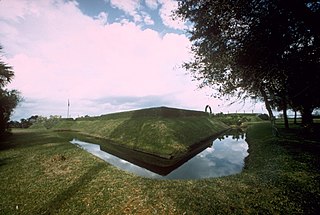
Arlington is a large region of Jacksonville, Florida, and is generally understood as a counterpart to the city's other large regions, the Urban Core, Northside, Southside, Westside, and the Beaches. It borders the Southside area at its southern end, and has several bridge connections to nearby beaches, the Northside and Downtown. The expansive neighborhood was incorporated into the city in 1968 as a result the Jacksonville Consolidation, a city-county consolidation of the governments of the City of Jacksonville and Duval County. Arlington is known for its mid-century modern architecture, and contains several architecturally significant homes designed by local architects Robert C. Broward, Taylor Hardwick, and William Morgan.

The architecture of Jacksonville is a combination of historic and modern styles reflecting the city's early position as a regional center of business. According to the National Trust for Historic Preservation, there are more buildings built before 1967 in Jacksonville than any other city in Florida, though few structures in the city center predate the Great Fire of 1901. Numerous buildings in the city have held state height records, dating as far back as 1902, and last holding a record in 1981.

Laura Street is a north–south street in Jacksonville, Florida, United States, named for the daughter of the city's founder, Isaiah D. Hart. Historically, the downtown portion of Laura Street has been considered the financial district of Jacksonville.